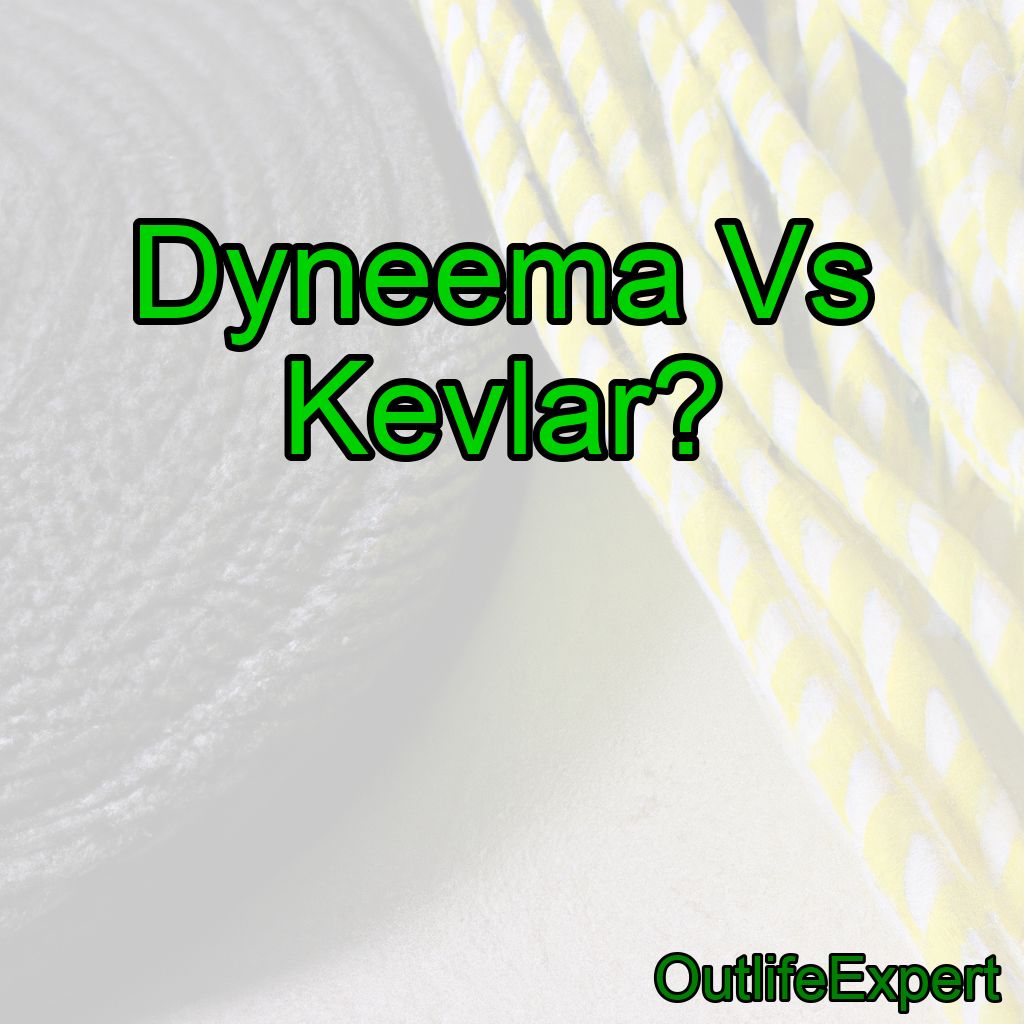Dyneema vs Kevlar: What’s the difference?
Dyneema and Kevlar are both synthetic fibers known for their impressive strength-to-weight ratios, resistance to abrasion, and chemical stability. However, they differ in several key aspects:
Dyneema: The World’s Strongest Fiber
Dyneema, also known as Ultra-High-Molecular-Weight Polyethylene (UHMWPE), is a gel-spun, multi-filament fiber that boasts incredible tensile strength. In fact, it’s considered the world’s strongest fiber, being 15 times stronger than steel and up to 40% stronger than Kevlar on a weight-for-weight basis.
Properties of Dyneema
- Lightweight and flexible
- High resistance to abrasion, cutting, and chemicals
- Low specific gravity (floats on water)
- Minimal elongation (low stretch)
- UV resistant
Kevlar: The Pioneer of High-Performance Fibers
Kevlar, an aramid fiber, was first introduced by DuPont in the 1960s and quickly gained popularity for its use in protective gear and equipment. Its strength comes from its unique molecular structure, which consists of long chains of molecules that are tightly bound together.
Properties of Kevlar
- High tensile strength and toughness
- Good resistance to abrasion, cutting, and chemicals
- High thermal stability
- Excellent resistance to impact and fatigue
- Low elongation (low stretch)
Applications of Dyneema and Kevlar
Both Dyneema and Kevlar have a wide range of applications, from industrial uses to everyday products. However, their unique properties make them better suited for specific purposes.
Dyneema in the Maritime Industry
Due to its low specific gravity, Dyneema is an ideal choice for maritime applications. Its ability to float on water and resist abrasion makes it perfect for mooring lines, fishing nets, and ropes.
Kevlar in Protective Gear
Kevlar’s resistance to impact and fatigue makes it the go-to material for protective gear, such as bulletproof vests, helmets, gloves, and motorcycle apparel.
Dyneema in Outdoor Gear
The lightweight and high-strength properties of Dyneema make it a popular choice for outdoor gear, such as tents, backpacks, and high-performance sails.
Kevlar in Aerospace and Automotive Industries
Kevlar’s high thermal stability and resistance to fatigue make it ideal for use in aerospace and automotive applications, such as brake pads, tires, and airplane components.
Pros and Cons of Dyneema and Kevlar
While both materials possess impressive qualities, they also have their drawbacks.
Advantages of Dyneema
- Extremely strong and lightweight
- Resistant to abrasion, cutting, and chemicals
- Floats on water
- UV resistant
Disadvantages of Dyneema
- Less resistant to heat compared to Kevlar
- Higher cost
- Can be slippery, making it difficult to knot
Advantages of Kevlar
- High tensile strength and toughness
- Resistant to abrasion, cutting, and chemicals
- Excellent thermal stability
- Good resistance to impact and fatigue
Disadvantages of Kevlar
- Heavier than Dyneema
- Absorbs moisture
- Less resistant to UV exposure
Cost Comparison: Dyneema vs Kevlar
In general, Dyneema tends to be more expensive than Kevlar due to its superior strength-to-weight ratio and resistance to environmental factors. However, the specific cost will depend on the application, quantity, and quality of the fibers.
Conclusion: Which is Better, Dyneema or Kevlar?
In the battle between Dyneema and Kevlar, there isn’t a clear winner, as both materials offer unique advantages and disadvantages. The choice between the two will ultimately depend on the specific application and requirements. To sum up:
1.Dyneemais the world’s strongest fiber, with a strength-to-weight ratio 15 times greater than steel.
2.Kevlaris a pioneer in high-performance fibers, known for its strength, toughness, and thermal stability.
3. Both materials are resistant to abrasion, cutting, and chemicals.
4. Dyneema is lightweight, flexible, and floats on water, making it ideal for maritime applications.
5. Kevlar’s resistance to impact and fatigue makes it perfect for protective gear and equipment.
6. Dyneema is popular in outdoor gear, while Kevlar is commonly used in the aerospace and automotive industries.
7. Dyneema has a higher resistance to UV exposure compared to Kevlar.
8. Kevlar has better thermal stability than Dyneema.
9. Dyneema is generally more expensive than Kevlar.
10. The choice between Dyneema and Kevlar depends on the specific application and requirements.
FAQs
What is stronger than Dyneema?
There are several materials that are stronger than Dyneema, including carbon nanotubes, graphene, and ultra-high molecular weight polyethylene fibers.
Is Kevlar stronger than Dyneema?
Kevlar and Dyneema have different properties and strengths, so it is difficult to make a direct comparison. Kevlar is stronger in terms of puncture resistance and heat resistance, while Dyneema is stronger in terms of tensile strength and abrasion resistance. Ultimately, the choice between the two will depend on the specific application and requirements.
What is the difference between Dyneema and aramid?
Dyneema is a type of ultra-high molecular weight polyethylene (UHMWPE) fiber, while aramid refers to a family of synthetic fibers such as Kevlar and Nomex. Dyneema is lighter and stronger than aramid, but aramid has better heat resistance and is more commonly used in applications such as protective clothing and fire-resistant materials.
Is Dyneema fire resistant?
Dyneema is not inherently fire resistant, but it can be treated with fire-resistant coatings to improve its fire resistance.
Which is stronger Kevlar or Dyneema?
Dyneema is stronger than Kevlar.
Which is better Dyneema or Kevlar?
It depends on the specific application. Dyneema is stronger and lighter than Kevlar, making it better for applications where weight is a concern. Kevlar, on the other hand, is better at absorbing impact and is more heat-resistant, making it better for applications where those factors are important.





